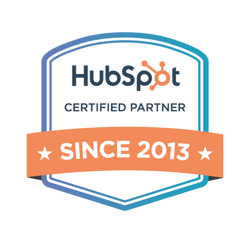Understanding your customers is the cornerstone of effective marketing. Whether you're launching a new product or refining an existing service, tailoring your messaging to specific segments can mean the difference between a successful campaign and one that falls flat. Diving deeper into customer segmentation is more than just demographics—it's about gaining a holistic view of your customers.
1. What is Customer Segmentation?
Customer segmentation is the practice of dividing your customer base into distinct groups based on specific shared characteristics. These can range from basic demographics (like age or gender) to more intricate details like buying behavior, product usage, or brand loyalty. Think about the Who, What, and Why someone would purchase your product or service. This will help you start to define your customer segments and overall personas.
2. The Importance of Advanced Segmentation
As you begin your journey with buyer personas and segmentation, you'll want to go beyond broad categories to narrow your messaging and improve your campaigns. This includes:
-
Precision: Advanced segmentation narrows your target audience, ensuring your marketing dollars aren't wasted on irrelevant prospects.
-
Personalization: It allows for tailored messaging that resonates deeply with specific groups, resulting in better engagement and ROI.
-
Strategic Planning: Understanding segments lets senior marketers forecast trends, allocate resources, and prioritize initiatives more effectively.
3. Moving Beyond Basic Demographics
Traditional segmentation methods focus on age, gender, and location. But modern consumers expect more tailored experiences. Advanced segmentation categories include:
-
Psychographics: This encompasses a consumer's lifestyle, habits, interests, and values. For instance, a company might target eco-conscious individuals or tech enthusiasts.
-
Behavioral Data: How do customers interact with your products? Consider factors like purchase history, product usage, and brand interactions.
-
Value-Based Segmentation: This involves segmenting customers based on their lifetime value or potential profitability.
4. Using Technology for In-Depth Analysis
With the beginning of AI and more advanced big data, marketers can leverage advanced tools for segmentation, including:
-
Predictive Analytics: By analyzing past behaviors, marketers can predict future actions. For example, identifying which customers are most likely to churn can help create retention-focused campaigns.
-
Machine Learning: Algorithms can identify hidden patterns in consumer data, allowing for segmentation that's not immediately obvious.
-
Customer Journey Mapping Tools: These help visualize customers' various touchpoints with a brand, ensuring no interaction is overlooked.
5. Tailored Marketing Strategies for Each Segment
Once you've identified your segments, create personalized marketing strategies to connect with your personas, including:
-
Targeted Content: Craft content that speaks directly to each segment's needs, challenges, and desires. A one-size-fits-all approach no longer works.
-
Segment-Specific Offers: If one segment values sustainability, offer them eco-friendly options or incentives. If another segment values speed, prioritize expedited shipping or fast response times.
-
Communication Channels: Different segments might prefer different communication channels. While younger audiences might resonate with Instagram stories, an older demographic might engage better with email newsletters.
6. Evaluating and Refining Your Segments
The market, and therefore your customers, are constantly evolving. Marketers should constantly be evaluating their segments by:
-
Regularly Review Data: Ensure that the segments still hold true. Are there emerging trends or new segments cropping up?
-
Conduct Surveys and Feedback Loops: Sometimes, the best insights come directly from the source. Regular feedback can refine and redefine segments.
-
Iterate: Just like any marketing strategy, segmentation should be flexible. Adapt and refine as you gather more data.
7. Potential Pitfalls in Customer Segmentation
While segmentation is powerful, it's not without challenges:
-
Over-Segmentation: If you create too many tiny segments, you risk over-complicating your marketing strategy and diluting your efforts.
-
Relying Solely on Historical Data: While past behavior is informative, it's not always indicative of future actions, especially in rapidly changing markets.
-
Bias in Data: Ensure your data collection methods are unbiased and comprehensive to avoid skewed segments.
Advanced customer segmentation is not merely a tactic; it's a mindset. Marketers should embrace this holistic approach to drive immediate results and set the foundation for long-term brand loyalty and success.
Senior marketers can ensure that their strategies are effective and pioneering by staying agile, leveraging technology, and maintaining a keen understanding of the evolving consumer landscape. In an age where consumers are inundated with content and choices, standing out is no longer about shouting the loudest but speaking directly to the consumer's heart. And that starts with truly understanding who they are.
Are you looking to drive your organization's digital transformation, marketing operational effectiveness, or integrated digital strategy? Learn more about our Fractional Marketing Leader services, where our team of digital experts can help with these types of larger strategic initiatives. Or, if you're looking for shorter-term digital marketing support, you can learn about our inbound and digital marketing consulting offerings.


__Square.png?width=250&height=250&name=Marketing_Hub_(1)__Square.png)




.png?width=250&name=diamond-badge-color%20(1).png)
